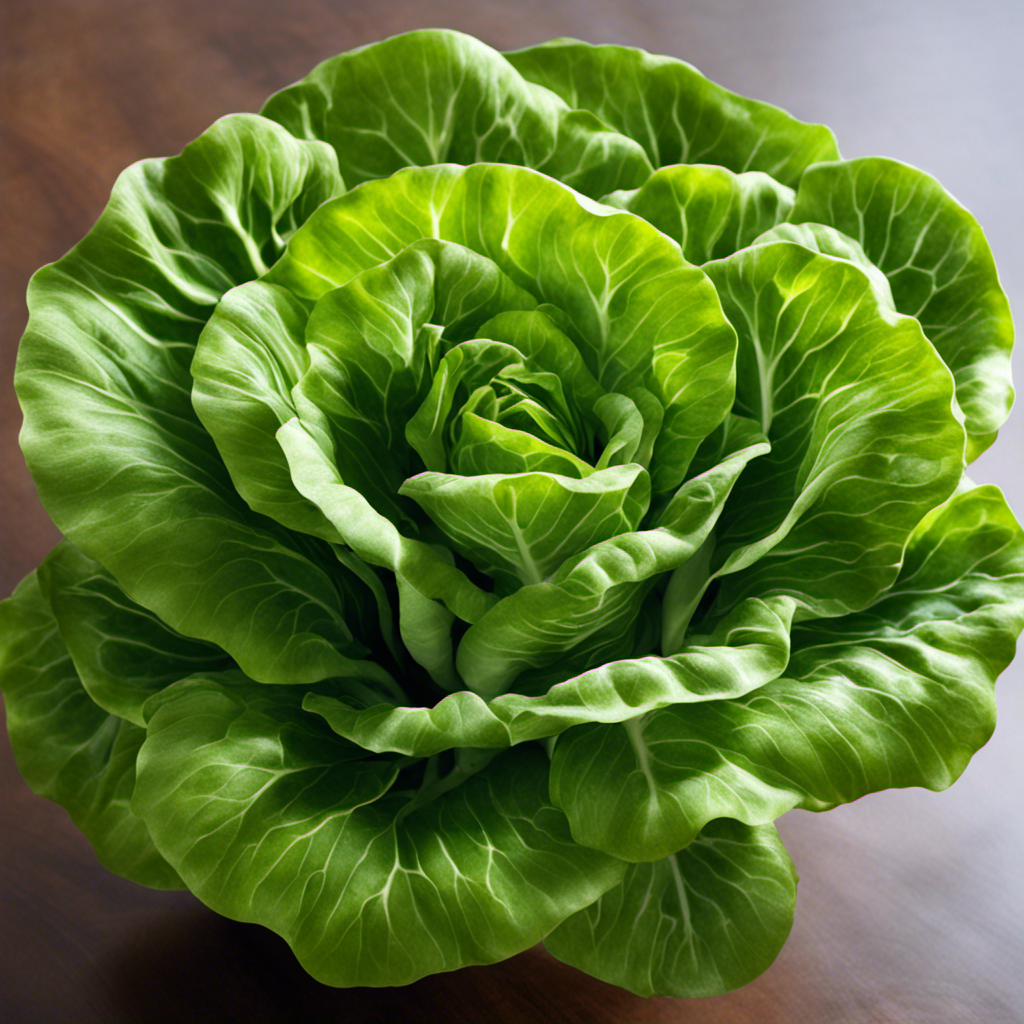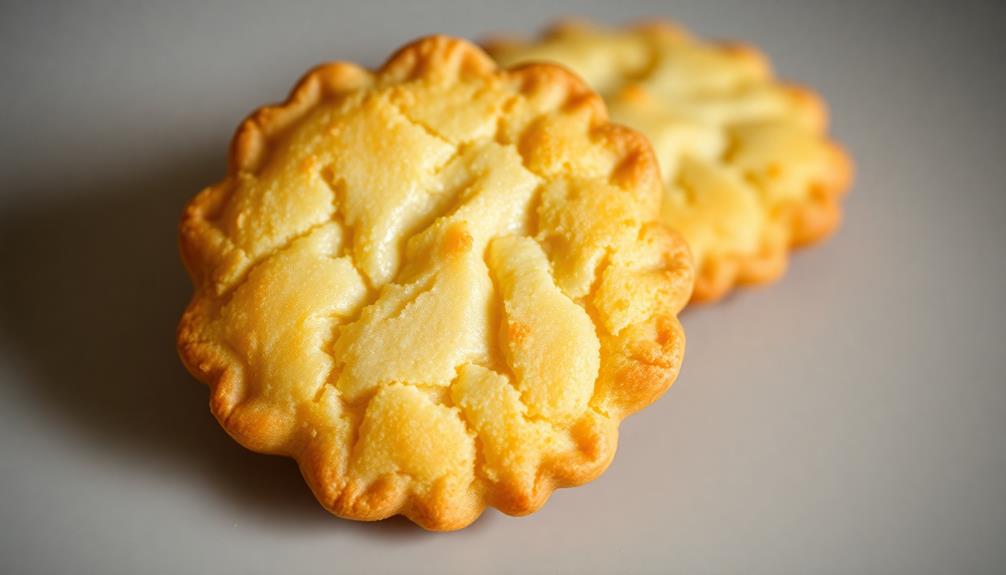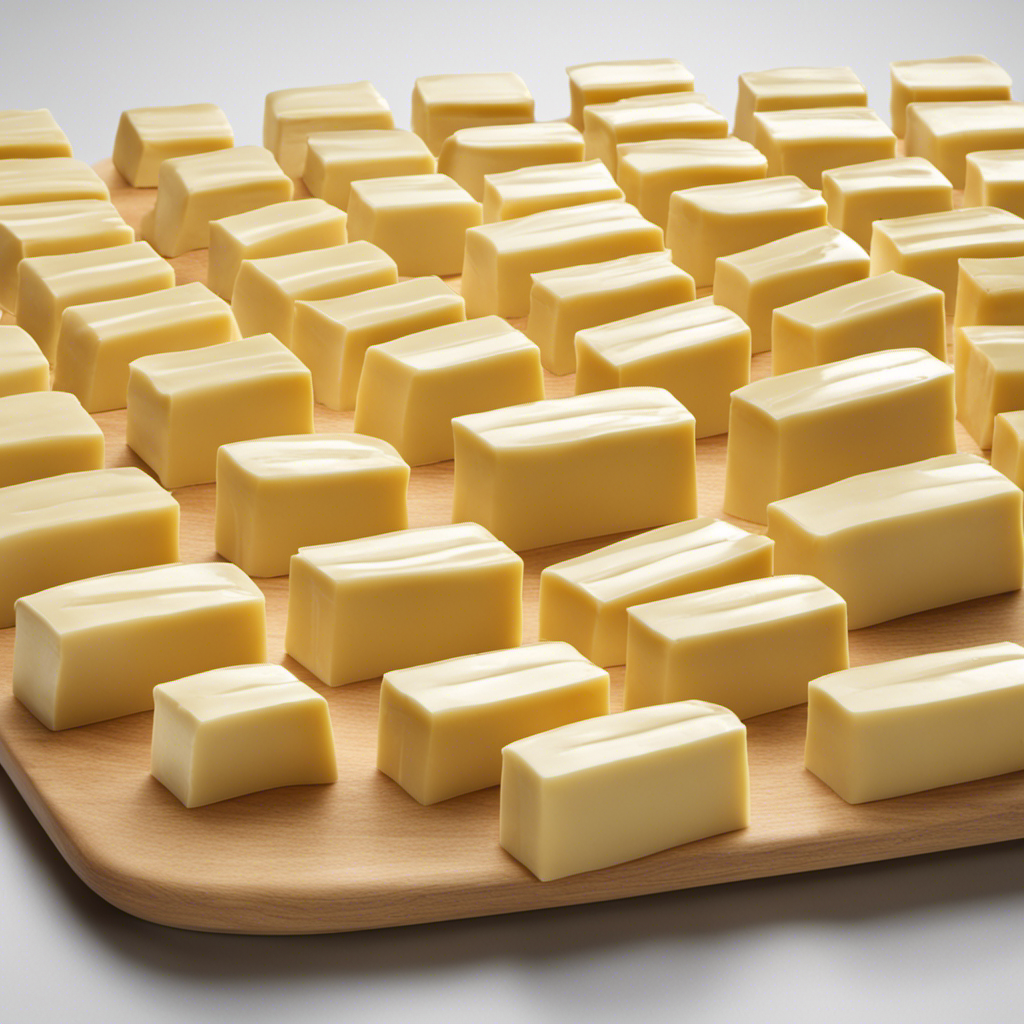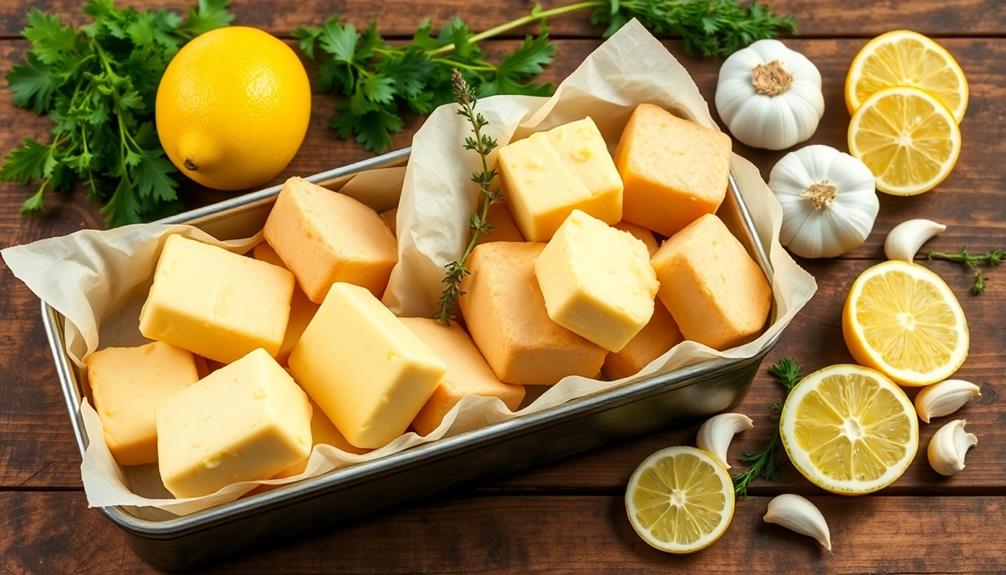Hello!
Have you ever wondered when babies can start enjoying the creamy goodness of butter? Well, fret no more! In this article, I’m going to share with you all the evidence-based information you need to know about introducing butter to your little one’s diet.
From the health benefits it offers to the age recommendations and safety precautions, we’ve got you covered.
So, let’s dive in and discover when your baby can savor the deliciousness of butter!
Key Takeaways
- Butter can provide essential nutrients and healthy fats for a baby’s growth and development.
- It is recommended to introduce healthy fats like avocado or olive oil instead of butter, as it can be difficult for babies to digest and high in sodium.
- Butter should be introduced as a complementary food around 6 months of age, while being cautious of potential allergic reactions.
- If a baby is allergic to dairy or if preferred, there are alternative options and substitutes for butter such as margarine, coconut oil, avocado spread, and olive oil.
Health Benefits of Butter for Babies
Butter can provide essential nutrients and healthy fats for babies’ growth and development. It is important to consider the nutritional value and allergy risk assessment when introducing butter to your baby’s diet.
Butter is a rich source of vitamins A, D, E, and K, which are crucial for the proper functioning of the immune system and bone development. The healthy fats in butter help in brain development and absorption of fat-soluble vitamins.
However, it is essential to consult with your pediatrician before introducing butter to your baby, especially if there is a family history of allergies or if your baby has shown any signs of food allergies. They can guide you in assessing the allergy risk and determine the appropriate age to introduce butter into your baby’s diet.
Nutritional Value of Butter for Infant Development
Although it’s important for infant development, the nutritional value of butter should be carefully considered.
When it comes to infant digestion, it’s crucial to understand that butter is high in saturated fat, which can be difficult for babies to digest.
While fat is necessary for growth and development, it’s recommended to introduce healthy fats such as avocado or olive oil instead.
Butter can also be high in sodium, which should be limited in an infant’s diet.
When introducing solids, it’s important to follow recommended serving sizes and frequency.
A small amount of butter can be incorporated into baby’s food occasionally, but it should not be a primary source of fat.
Always consult with a pediatrician to ensure that your baby’s nutritional needs are being met.
Age Recommendations for Introducing Butter to Babies
When it comes to introducing butter to babies, it’s important to consider their age and developmental stage.
While butter is generally safe for babies to consume, it’s recommended to wait until around 6 months of age to introduce it as a complementary food.
However, it’s crucial to be aware of any potential allergic reactions that may occur, as some babies may be sensitive or allergic to dairy products.
Safe Butter Introduction
If you’re introducing butter to your baby, it’s important to do so in a safe and cautious manner. While butter is generally safe for babies to consume after six months of age, it is best to consult with your pediatrician before introducing any new food to your little one. In some cases, babies may have allergies or sensitivities to dairy products, so it’s essential to watch for any adverse reactions such as rashes, hives, or digestive issues. If your baby is allergic to dairy or you prefer to avoid butter, there are several butter substitutes and alternatives available. Here’s a table highlighting some popular options:
| Butter Substitutes | Description | Nutritional Value |
|---|---|---|
| Margarine | Made from vegetable oils | Lower in saturated fat |
| Coconut oil | Derived from coconuts | High in healthy fats |
| Avocado spread | Made from avocados | Rich in vitamins |
| Olive oil | Extracted from olives | Contains antioxidants |
Allergic Reactions in Babies
To ensure your baby’s safety, it’s important to be aware of any potential allergic reactions they may have to new foods. Introducing new foods to your baby’s diet can be exciting, but it’s crucial to be cautious.
Allergic reactions can occur when the immune system mistakenly identifies certain proteins in food as harmful. Common food allergens for babies include cow’s milk, eggs, peanuts, and wheat. These allergies can cause a range of symptoms, from mild hives to life-threatening anaphylaxis.
To prevent allergic reactions, it’s recommended to introduce new foods one at a time, waiting a few days between each new food. This allows you to identify any potential reactions.
If you suspect your baby has a food allergy, consult a healthcare professional for proper diagnosis and guidance on prevention measures.
Health Benefits of Butter?
You may be surprised to learn that butter, when consumed in moderation, can actually provide some health benefits. Here are a few reasons why butter can be good for you:
- Butter is a good source of vitamins A, D, E, and K, which are essential for growth and development.
- It contains healthy fats that can help with brain development and overall cognitive function.
- Butter is rich in butyrate, a type of fatty acid that has been linked to improved gut health.
- It contains conjugated linoleic acid (CLA), which has been shown to have anti-inflammatory properties.
- Butter is also a good source of cholesterol, which is necessary for the production of hormones and cell membranes.
Now that we know about the health benefits of butter, let’s explore the signs of readiness for butter introduction in infants.
Signs of Readiness for Butter Introduction in Infants
When it comes to introducing new foods to babies, it’s important to consider their digestive system development, allergy risk assessment, and nutritional benefits evaluation.
Babies’ digestive systems are still developing, so it’s crucial to introduce foods gradually and monitor any signs of intolerance or discomfort.
Conducting an allergy risk assessment can help identify any potential allergies or sensitivities, allowing for early intervention and prevention.
Additionally, evaluating the nutritional benefits of foods can ensure that babies are receiving the necessary nutrients for their growth and development.
Digestive System Development
Babies’ digestive systems develop gradually over time, so it’s important to understand their development before introducing solid foods. Here are five key points to consider:
-
Growth of the digestive system: From birth, a baby’s digestive system is not fully developed. It takes time for their stomach, intestines, and enzymes to mature, allowing them to properly digest solid foods.
-
Increasing enzyme production: As babies grow, their bodies produce more enzymes that aid in digestion. This gradual increase in enzyme production helps them break down complex nutrients found in solid foods.
-
Development of swallowing skills: Babies need to develop the ability to swallow solid foods safely. Initially, they rely on a reflex called the tongue-thrust reflex, but as they grow, they develop the coordination and control needed to swallow smoothly.
-
Introduction of new textures: Babies’ digestive systems need time to adjust to different textures. Starting with pureed foods and gradually introducing thicker textures helps them adapt and prevents choking.
-
Signs of readiness: Look for signs that your baby is ready for solid foods, such as sitting up with support, showing interest in what you eat, and being able to move food from the front to the back of their mouth.
Understanding the gradual development of a baby’s digestive system is crucial when introducing solid foods. By following their cues and introducing foods gradually, we can support their growth and ensure a positive eating experience.
Allergy Risk Assessment
Understanding the potential allergy risk is essential when introducing new foods to a baby’s diet. As a parent, it’s important to consider allergy prevention and take necessary precautions while introducing allergenic foods.
Research suggests that early introduction of allergenic foods, such as peanuts, eggs, and milk, may actually help reduce the risk of developing allergies in the long run. However, it is recommended to introduce these foods gradually, one at a time, and observe any signs of allergic reactions.
Start with a small amount and gradually increase the quantity if there are no adverse reactions. It’s also crucial to consult with a pediatrician or allergist before introducing allergenic foods to your baby. They can provide guidance, assess your baby’s individual risk factors, and recommend a suitable approach to minimize the risk of allergies.
Nutritional Benefits Evaluation
To evaluate the nutritional benefits, you can consult with a registered dietitian who can provide guidance and help you create a balanced and age-appropriate meal plan for your child.
When it comes to your child’s growth and development, it’s important to understand the nutritional benefits of their diet. Here are some key points to consider:
- Nutritional benefits support healthy growth and development
- A well-balanced diet provides essential vitamins and minerals
- Nutrients like calcium and iron are crucial for bone and brain development
- Proper nutrition helps boost immunity and fight off illnesses
- Healthy eating habits established early on can prevent chronic diseases later in life
Precautions and Safety Measures for Giving Butter to Babies
Parents should be aware of the precautions and safety measures when giving butter to their babies. Butter introduction should be done gradually, starting with small amounts mixed into other foods to ensure the baby’s tolerance. It is important to choose unsalted butter and avoid flavored or spiced varieties.
Babies under 6 months old should not be given butter due to the risk of developing allergies and digestive issues. When introducing butter to older babies, it is essential to watch out for any signs of allergy, such as rash, swelling, or difficulty breathing.
Furthermore, butter should be used in moderation, as it is high in saturated fat. Parents should consult with their pediatrician before introducing butter into their baby’s diet to ensure it is appropriate and safe for their specific needs.
Tips for Introducing Butter to Baby’s Solid Food Diet
When introducing butter to your baby’s solid food diet, start by mixing small amounts into other foods to ensure their tolerance. This allows their taste buds to gradually get accustomed to the new flavor and texture. Here are some tips to make the introduction process smoother:
- Experiment with different butter alternatives such as avocado or nut butters to provide a variety of flavors and nutrients.
- Spread a thin layer of butter on toast or crackers to introduce it as a condiment.
- Use melted butter as a sauce for steamed vegetables or pasta to enhance the taste.
- Incorporate butter into homemade purees or mashed foods, like sweet potatoes or peas.
Monitor your baby for any signs of discomfort or allergies during and after introducing butter.
Alternative Options to Butter for Babies With Dairy Allergies
Now that we’ve discussed introducing butter to a baby’s diet, let’s explore alternative options for babies with dairy allergies. It’s important to remember that babies who are allergic to dairy should avoid butter, as it is a dairy product. However, there are plenty of dairy-free substitutes available that can be used in place of butter.
Here are some alternative options to butter for babies with dairy allergies:
| Alternative Options | Benefits |
|---|---|
| Coconut Oil | Rich in healthy fats and adds a subtle tropical flavor to dishes. |
| Avocado | Provides a creamy texture and is packed with nutrients like healthy fats, fiber, and vitamins. |
| Applesauce | Adds moisture to baked goods and can be used as a spread on toast or pancakes. |
| Olive Oil | High in monounsaturated fats and adds a distinct flavor to dishes. |
| Nut Butters (e.g., almond butter, cashew butter) | Adds a creamy texture and is a good source of protein and healthy fats. |
These dairy-free substitutes can be used in various recipes to provide flavor and richness without the use of butter. Always consult with your pediatrician before introducing new foods to your baby’s diet, especially if they have a dairy allergy.
Common Concerns and Myths About Giving Butter to Babies
One misconception is that introducing butter to a baby’s diet will cause them to develop a dairy allergy. However, this is not supported by evidence. In fact, introducing small amounts of butter to a baby’s diet can have several benefits.
Here are some common concerns and myths about giving butter to babies:
-
Butter can be a healthy source of fat for babies, as it contains essential nutrients like vitamins A, D, and E.
-
Contrary to popular belief, introducing butter does not increase the risk of developing a dairy allergy.
-
Babies have different texture preferences, and introducing butter can help diversify their diet and develop their palate.
-
It is important to monitor portion sizes and not overdo it with butter, as excessive consumption can lead to weight gain.
-
Always consult with your pediatrician before introducing any new food to your baby’s diet to ensure it aligns with their individual health needs.
Frequently Asked Questions
Is It Safe to Give Butter to Babies With Lactose Intolerance?
It’s important to consider lactose-free butter alternatives for babies with lactose intolerance. Before introducing butter, it’s best to start with small quantities to test their tolerance. Always consult with a pediatrician for guidance.
Can I Use Margarine as a Substitute for Butter for My Baby?
I can use margarine as a substitute for butter for my baby, but it’s important to consider the benefits of using butter. Margarine lacks some nutrients found in butter, so moderation is key.
Will Introducing Butter to My Baby’s Diet Cause Them to Gain Excessive Weight?
Introducing butter to babies can impact their weight, but it also offers nutritional benefits for their development. It’s important to monitor portion sizes and incorporate a balanced diet to prevent excessive weight gain.
Are There Any Potential Choking Hazards When Giving Butter to Babies?
There might be potential allergies or choking hazards when giving butter to babies. It’s important to introduce it in an appropriate serving size and monitor for any adverse reactions.
Can I Mix Butter With Other Ingredients to Make It Easier for My Baby to Consume?
Sure, I can mix butter with fruits to make yummy spreads for my baby. But before introducing butter, I should be cautious about allergies. Always consult a pediatrician before starting new foods.
Conclusion
In conclusion, introducing butter to your baby’s diet can be a beneficial and nutritious choice. With its health benefits and nutritional value, butter can support infant development.
However, it is important to follow age recommendations and look for signs of readiness before introducing butter to your baby. Take necessary precautions and safety measures, and consider alternative options for babies with dairy allergies.
Remember, don’t let common concerns and myths hold you back from giving your baby the goodness of butter. Embrace the buttery journey and let your little one thrive!










